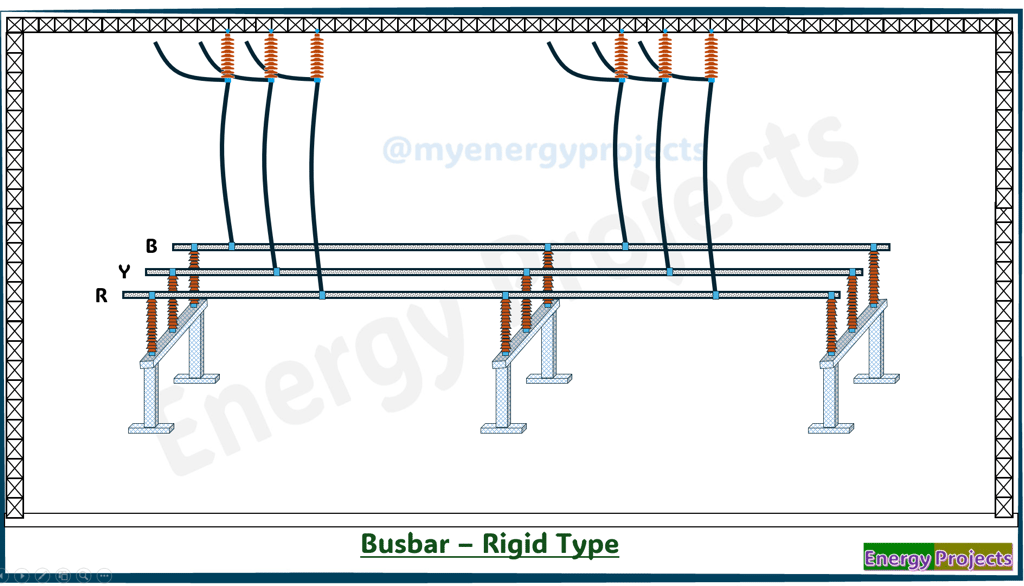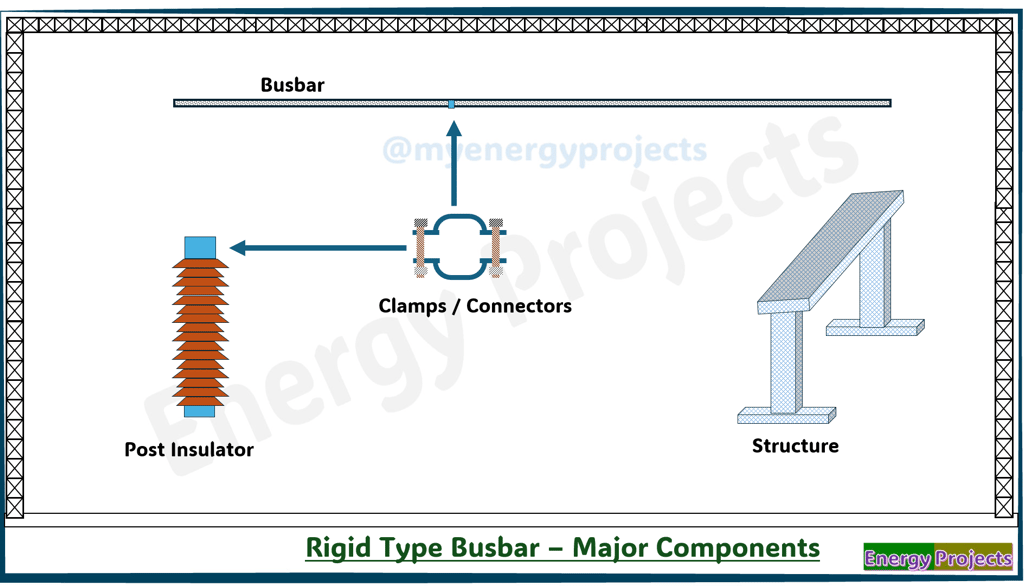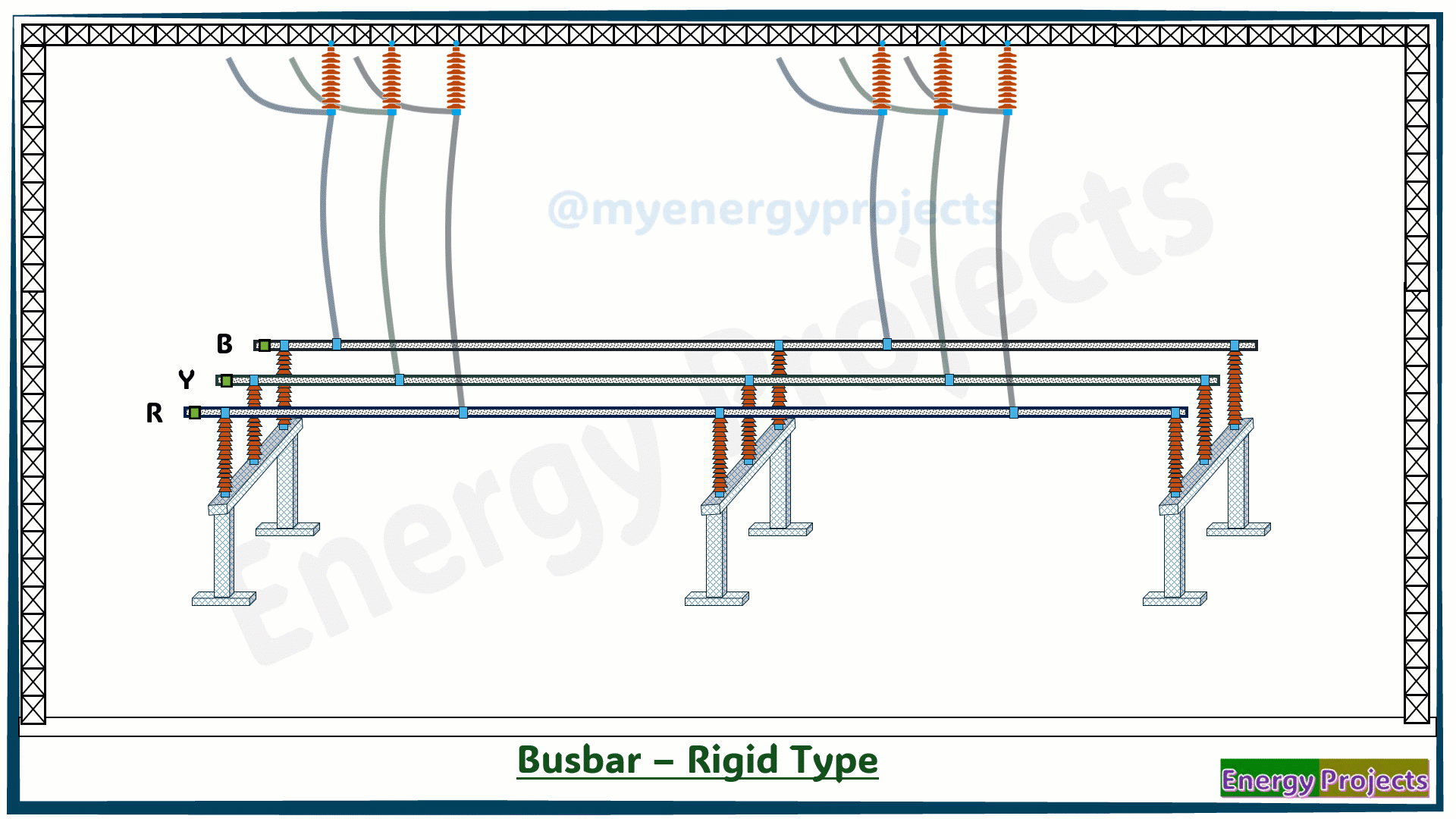01.Rigid Type Busbar Arrangement
Track Sequence of Engineering
A Busbar is mounted on insulators / Post Insulators and maintains a fixed shape, unlike flexible cables. Rigid busbars are commonly used in substations, switchgear, and industrial electrical systems.
Advantages of Rigid Busbars:
Supports High Current Flow – Designed to handle substantial amounts of electrical current without overheating.
Strong and Reliable – Its solid structure provides excellent mechanical strength and long-term durability.
Minimized Power Loss – Low electrical resistance leads to efficient power transmission.
Effective Cooling – The metallic surface aids in dispersing heat efficiently during operation.
Clean System Layout – Ideal for organized installations, making system maintenance and inspection easier.
Disadvantages of Rigid Busbars:
No Flexibility – Cannot bend or adjust easily, making it less suitable for movable setups or tight spaces.
Installation is Demanding – Requires careful planning, precise fitting, and secure support structures.
Costlier than Cables – Material and installation expenses are typically higher compared to flexible wiring.
Thermal Expansion Risks – Needs allowance for expansion and contraction to avoid damage at joints.
Not Vibration-Friendly – May not perform well in environments with constant movement or vibration.
Space - It takes more space as it will be landed .
Rigid busbar - Major Components
Busbar
Clamps / Connectors
Structure
Post Insulator
Busbar:
A rigid busbar is a solid conductor, usually made of copper or aluminum wound pipe, used for high-current power distribution.
Clamps / Connectors:
Clamps and connectors in rigid busbar systems ensure strong electrical and mechanical connections. Made from copper or aluminum, they often feature tin or silver plating to reduce resistance. Types include bolted connectors, T-connectors, and expansion joints. They support high currents and handle thermal and mechanical stress.
Structure:
Steel structures used to hold post insulators in high-voltage substations provide mechanical support for busbars and associated equipment. These structures are typically made of galvanized steel to resist corrosion and are designed to withstand wind, seismic, and short-circuit forces. Common types include gantries, lattice frames, and cantilever beams. They are engineered to maintain proper electrical clearances and securely anchor post insulators for safe and stable operation.
Post Insulator
Post insulators are used to support and electrically isolate rigid type busbars in high-voltage substations. They provide a strong mechanical base to hold the busbar in position while preventing current from flowing to the grounded steel structure. Made from porcelain or polymer, post insulators are designed to withstand high electrical, thermal, and mechanical stresses. They ensure safe clearance from earth and other phases, maintaining system reliability and insulation integrity.
Operation:
You can see the operation of rigid type busbar arrangement.






